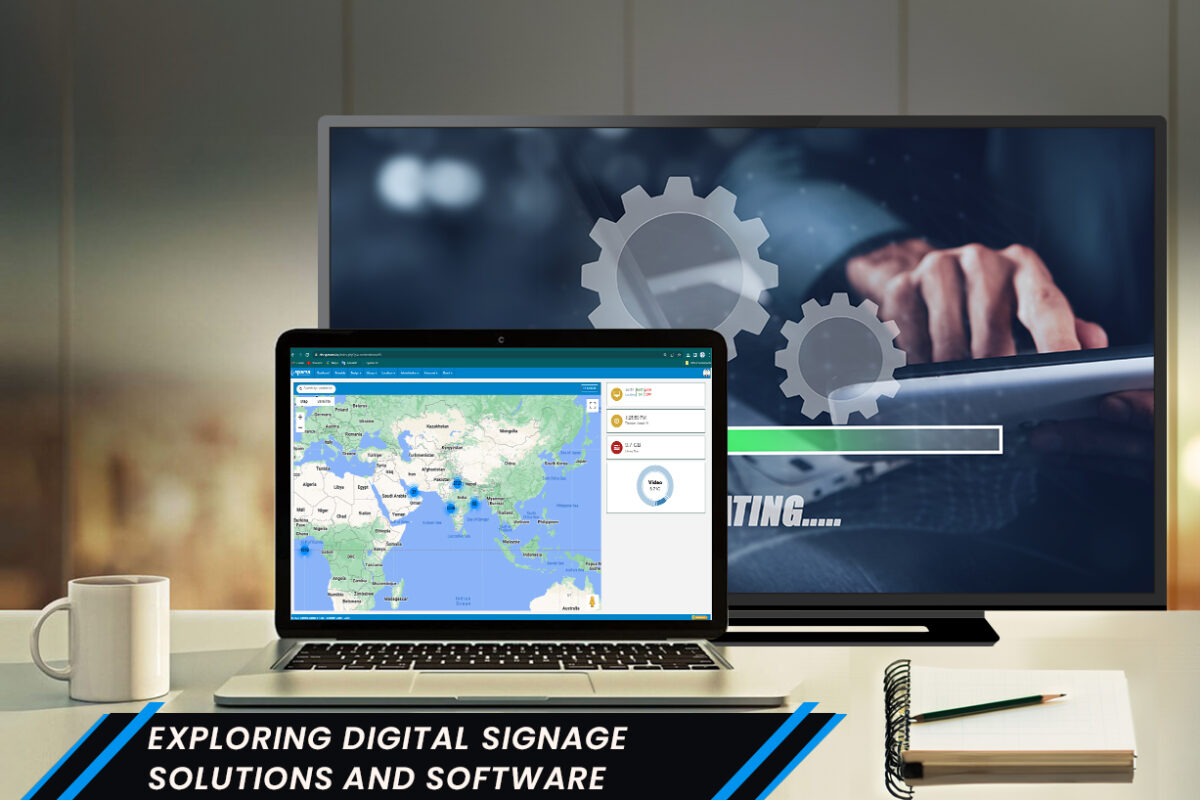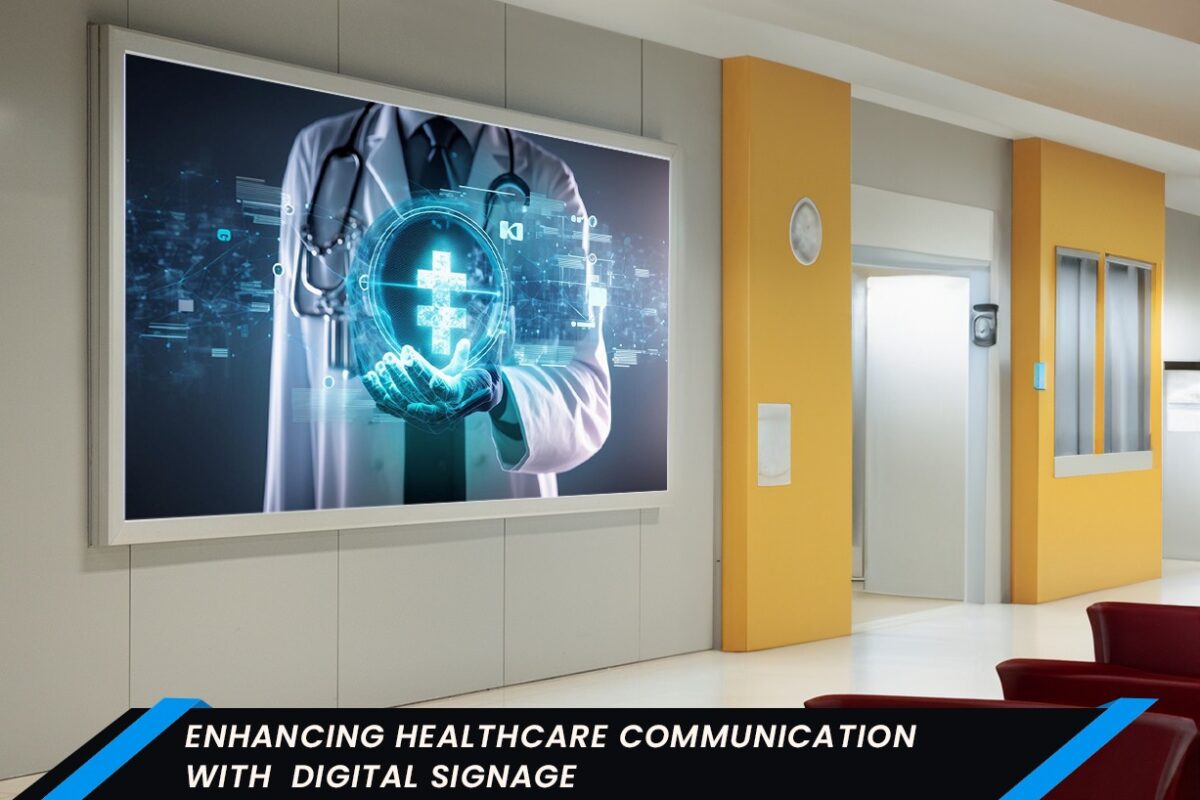The Transformative Power of Digital Signage Solutions and Software for Businesses
In today’s rapidly evolving business landscape, staying competitive requires embracing innovative technologies that enhance customer engagement, streamline operations, and drive growth. One such technology that has gained significant traction is digital signage. This dynamic and versatile tool has proven to be a game-changer for businesses across various industries. In this blog, we’ll delve into the importance of digital signage solutions and digital signage software for businesses, exploring their benefits, use cases, and potential impact on overall success.
The Digital Signage Revolution
Digital signage refers to the use of digital displays, such as LCD, LED, or projection screens, to convey information, messages, or content. Unlike traditional static signs, digital signage enables real-time updates, interactive elements, and the ability to target specific audiences. This transformation from static to dynamic communication has opened up a world of possibilities for businesses to connect with their customers in innovative ways.
Benefits of Digital Signage Solutions
- Enhanced Engagement and Communication: Digital signage captures attention more effectively than static signs. Dynamic visuals, animations, and interactive content keep customers engaged, leading to improved communication and increased information retention.
- Flexible Content Management: With digital signage software, businesses can easily create, update, and schedule content remotely. This agility allows for adapting to changing circumstances, promoting timely offers, and ensuring relevant information is always displayed.
- Cost Savings: While the initial investment in hardware and software might seem significant, digital signage proves cost-effective in the long run. Traditional print signage involves recurring costs for design, printing, and distribution, which digital signage eliminates.
- Real-time Updates: In industries like retail and hospitality, prices, promotions, and events change frequently. Digital signage enables real-time updates, ensuring that customers receive accurate information, fostering trust and credibility.
- Improved Customer Experience: Interactive digital signage creates immersive experiences that captivate customers. In retail, for instance, touchscreens allow customers to browse products, view detailed information, and even place orders.
- Data-driven Insights: Many digital signage solutions offer analytics features that track viewer engagement and interactions. Businesses can gather valuable data on customer behavior, enabling informed decisions and targeted campaigns.
Use Cases of Digital Signage
Retail:
Digital signage enhances the in-store experience by providing product information, showcasing deals, and promoting new arrivals. It can also be used for wayfinding, guiding shoppers through large stores efficiently.
Hospitality:
Hotels and restaurants can use digital signage solutions to display menus, daily specials, event schedules, and local attractions. Interactive screens in hotel lobbies provide guests with useful information and entertainment.
Corporate Communication:
In office environments, digital signage software serves as an internal communication tool. It displays company announcements, employee recognition, and important updates in a visually appealing manner. It also ensures that no important announcements are missed or delayed.
Healthcare:
Hospitals and clinics utilize digital signage solutions for patient education, wayfinding, wait time updates, and health awareness campaigns. From saving waiting lines time to keeping people engaged, it can do all. Hence, digital signage software is a total game changer in the present era of healthcare.
Education:
Educational institutions use digital signage solutions for campus announcements, event promotions, and interactive learning experiences. From schools to colleges, digital signage software can be a complete solution for the students.
Transportation:
Airports, train stations, and bus terminals use digital signage software for real-time flight or departure information, directions, and advertising. Logistics industry cannot thank digital signage solutions enough for making their lives easier, along with reducing all the work load altogether.
The Role of Digital Signage Software
Digital signage software is the backbone of an effective digital signage strategy. It empowers businesses to manage content, design layouts, and monitor displays remotely. Key features of digital signage software include:
Content Creation and Management:
User-friendly interfaces allow businesses to create and edit content easily. Templates, animations, and scheduling tools simplify the process.
Remote Control:
Businesses can control multiple displays across different locations from a central dashboard, ensuring consistent messaging and branding.
Interactivity:
Advanced software supports touchscreens and interactive elements, enabling businesses to create engaging experiences for customers.
Analytics and Reporting:
Digital signage software provides insights into viewer engagement, helping businesses refine their content and strategies.
Scalability:
As businesses grow, digital signage software can accommodate additional displays and content without significant complexity.
Conclusion
In the digital age, leveraging innovative technologies is imperative for business success. Digital signage solutions, coupled with powerful software, offer businesses a dynamic platform to engage customers, enhance communication, and drive growth. From retail to hospitality, corporate environments to education, the versatility of digital signage is transforming how businesses convey information and connect with their target audiences. By embracing this technology and capitalizing on its benefits, businesses can stay ahead of the curve and create memorable experiences that resonate with customers for years to come.
Looking forward to getting started? You are at the right place. Connect with our industry experts at Sparsa Digital, and embark on your transformational journey today. Our team helps you provide tailored solutions as per your business, irrespective of the size or industry. We also make sure that businesses understand the complete essence of how digital transformation was much needed to take their profits to the next level. In the present era of fast pacing technology, every business needs to be equipped with the right technology to make swift moves past their competitors. This is exactly where we, at Sparsa Digital, can help you achieve primarily by using digital signage solutions in the right manner.



